Portugal: The Francesihna
The year is 2014. I am travelling in Portugal with my husband and our eight-month-old daughter. We have always loved backpacking, and while it’s our first time doing so since becoming parents, our little one seems to enjoy it, as well. While Pat carries the backpacks, I carry her in her sling. She sleeps, eats and watches the world go by. We take the train from Lisbon to Porto as we have heard Porto is beautiful – but truthfully, I am mostly going there to eat. More specifically, I am going to Porto to eat a sandwich.
I hear there is a sandwich in Porto unlike any other. Multiple layers of meat (including sausage, steak, roasted meat and ham), sandwiched between two slices of white batch loaf, topped with cheese and – if you like – egg, and then covered in a thick, soupy sauce. It’s kind of like gravy, but flavoured with tomato and beer. This sandwich is called a Francesihna, and is regularly touted as being one of the best sandwiches in the world.
History tells us this sandwich was created in the early 1950s, when a chef returned to the city from France and Belgium and attempted to adapt a Croque Monsieur (a French sandwich made with ham, cheese and béchamel) to the Portuguese palate.
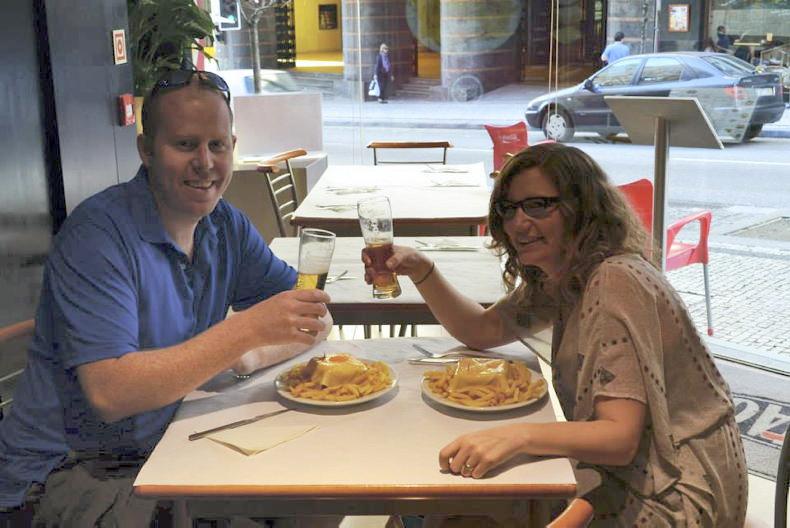
Janine and her husband, Pat, enjoying beer and Franceishna in Porto / Janine Kennedy
We ask multiple people where we should eat our first-ever Francesihna, and everyone in Porto says the same thing: Café Santiago.
This unassuming spot in Porto’s Rua de Passos Manuel has been serving up sandwiches and cold Sagres beer since 1959. The family-owned café developed its own recipe and method to make the sandwich, with a closely guarded secret recipe for the sauce, and little has changed over the years.
Though this was nearly a decade ago, I still remember my first bite of Francesihna. Rich and meaty, the sauce adds acidity and balance to the whole thing. It’s not something you would eat every day, but it is definitely something I would eat again.
Next time, though, I will share my Francesihna with someone. While delicious, its monstrous size defeated me.
Japan might be better-known for sushi or ramen noodles, but in recent years it has been recognised as being home to some of the best bread and sandwich makers in the world. Even pre-made conbini (Japanese convenience store) sandwiches are considered culinary perfection.
Irish chef Holly Dalton is a Japanese food enthusiast. She owns and operates Conbini Condiments, which makes three Japan-inspired sauces: Sunday, Katsu and Onsen (conbinicondiments.com). She is just back from two weeks in Japan, so we asked her about her experience with Japanese sandwiches.
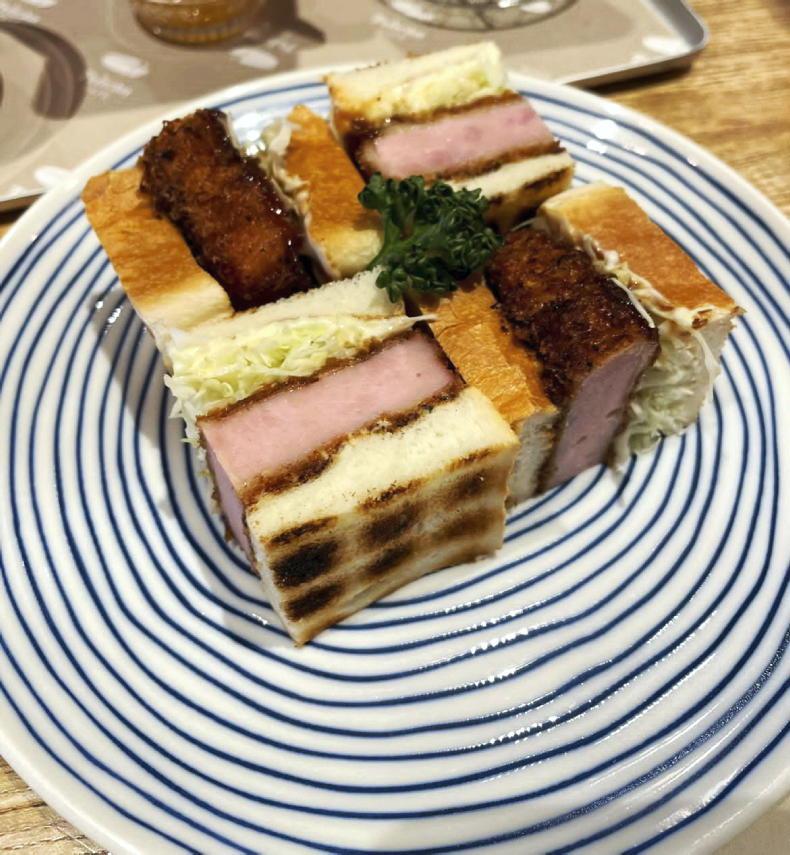
The Japanese Katsu Sandos at Pelican Cafe in Osaka are made by toasting the homemade shokupan with a charcoal grill / Holly Dalton
“The katsu sando (breaded pork) and egg sando (basically an egg salad sandwich - but better) are huge in Japan right now,” she says. “And you can get them in different derivatives depending on where you go. I went to this famous bakery in Tokyo called Pelican and they had this sandwich on offer called a ham katsu – it’s hard to describe, it’s not like the ham you get in Ireland, it kind of tastes like hot dog. It was so good! Just really soft shokupan, katsu sauce, kewpie mayo and this ham katsu. It was really comforting.”
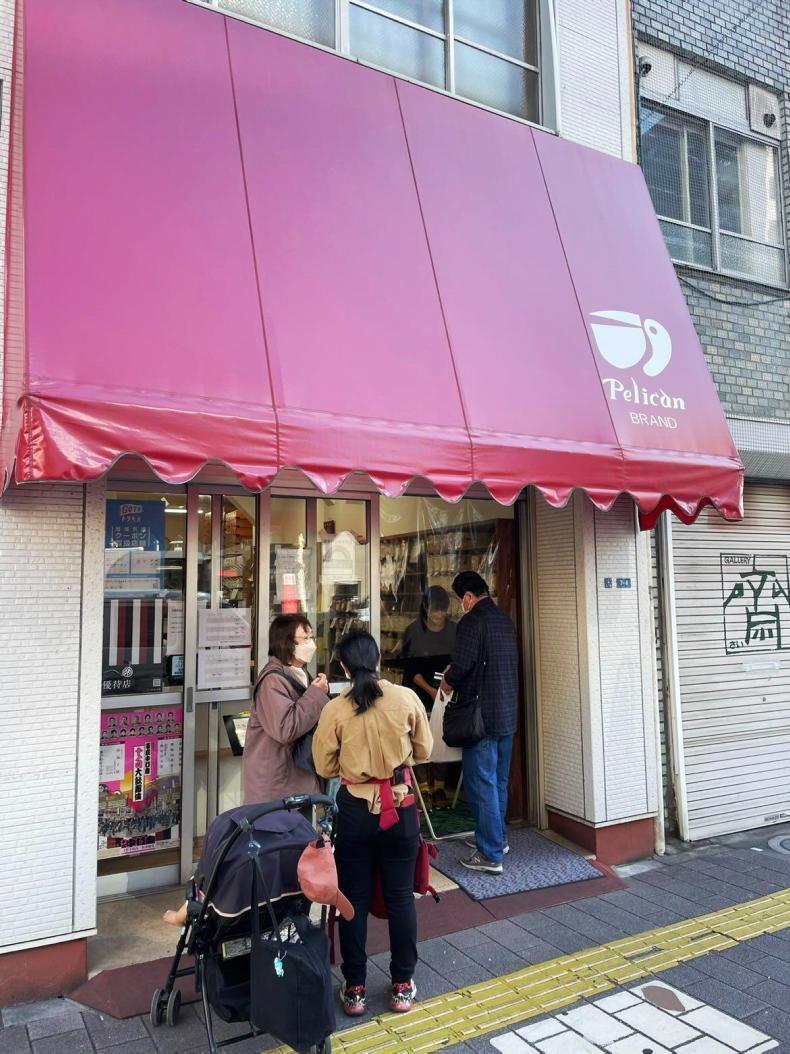
Pelican Cafe in Osaka, Japan / Holly Dalton
To learn about Japanese sandwiches, you’d nearly need to learn a new language. Shokupan is a soft, fluffy bread (sometimes called milk bread, it more directly translates into “eating bread”) made with a cooked mixture of flour and water or milk, called Tangzhong, which is rested before being added to the bread dough.
“I am totally obsessed with shokupan,” Holly says. “When I’m in Japan, I try to go to all the best places. In the Tokyo neighbourhood of Ginza, there’s a bakery with a wall of toasters. You pick your toaster and bring it to your table to make your own toast. Pelican has a bakery in one spot and a café down the road. All of their bread is pre-ordered and then you queue at the café to get it. They have a charcoal grill set up for making toast – a charcoal grill! Like, can you believe their level of commitment?”
In Japan, Katsu sandwiches are especially popular, with breaded, deep-fried pork cutlets being the most popular filling. The katsu sandwiches (or “sandos”) are filled with finely shredded cabbage and special katsu sauce and/or Japanese kewpie mayo. You can also get other proteins in the katsu style, including Kobe beef (though this will cost you) and the aforementioned “ham” Holly enjoyed in Osaka.
“Our first day there, we got off the plane and the first thing we did was go to a conbini to get a chicken katsu sandwich, which I prefer as the chicken has a little less fat,” Holly says. “Even the convenience store fried chicken is amazing quality. There is just nothing better.”
Back in Europe, Irish Country Living’s features editor Maria Moynihan recounts the best sandwich experience she has ever had while travelling. It might not be as popular on social media as the conbini sandwiches in Japan, but after hearing Maria speak about her zapiekanka experience, we have a sudden urge to hop on the next flight to Krakow.
“Is it normal to have a picture of yourself stuffing your face with a foot-long sandwich in a photo album?” She asks, sharing said photographic evidence. “If the sandwich in question is a Polish zapiekanka, then the answer is: absolutely.”
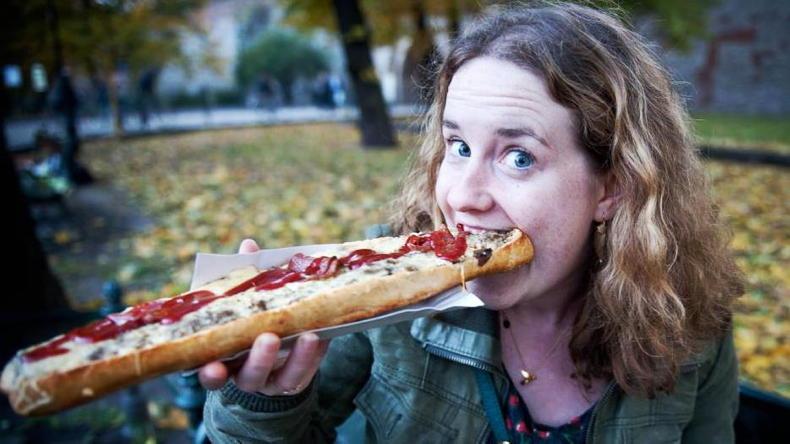
Maria Moynihan still vividly remembers her experience trying a Polish zapiekanka, even though it was over a decade ago. / Maria Moynihan
Like the revival of the Japanese sandwich (which was first developed after World War II, when US soldiers in Japan were looking for Americanised foods), there are similar historic communist roots associated with the Polish zapiekanka. Food enthusiasts are bringing the sandwich back to the fore after years of under-appreciation.
“I first tasted this most satisfying of street foods while in Krakow with my very good Polish friend Asia in October, 2011,” Maria says. “Seeking sustenance after a day of exploration, she brought me to an unassuming hatch where she ordered the open toasted sandwich with sautéed mushrooms, charcuterie and melted cheese on my behalf, with a generous dollop of ketchup on top. I can’t imagine that it cost more than the equivalent of a euro or two. But a decade on, I often think of it.
“Apparently, this Polish take on pizza is rooted in Communist times; and one of the very best places to try one if you are ever in Krakow is at Plac Nowy, in the Jewish quarter of the city,” she adds.
While travelling, food experiences (the good and the bad) are often the things you remember most, even decades after the fact. This is certainly true in Maria’s case.
“For me, nothing will ever beat sitting on a park bench with one of my very best pals, watching the autumn leaves fall, thinking how lucky I was to have this person in my life, this place ... and this sandwich,” she says.
Read more
Travel: our Aztec Adventures
Travel: Wheat fields and wool towns
Portugal: The Francesihna
The year is 2014. I am travelling in Portugal with my husband and our eight-month-old daughter. We have always loved backpacking, and while it’s our first time doing so since becoming parents, our little one seems to enjoy it, as well. While Pat carries the backpacks, I carry her in her sling. She sleeps, eats and watches the world go by. We take the train from Lisbon to Porto as we have heard Porto is beautiful – but truthfully, I am mostly going there to eat. More specifically, I am going to Porto to eat a sandwich.
I hear there is a sandwich in Porto unlike any other. Multiple layers of meat (including sausage, steak, roasted meat and ham), sandwiched between two slices of white batch loaf, topped with cheese and – if you like – egg, and then covered in a thick, soupy sauce. It’s kind of like gravy, but flavoured with tomato and beer. This sandwich is called a Francesihna, and is regularly touted as being one of the best sandwiches in the world.
History tells us this sandwich was created in the early 1950s, when a chef returned to the city from France and Belgium and attempted to adapt a Croque Monsieur (a French sandwich made with ham, cheese and béchamel) to the Portuguese palate.

Janine and her husband, Pat, enjoying beer and Franceishna in Porto / Janine Kennedy
We ask multiple people where we should eat our first-ever Francesihna, and everyone in Porto says the same thing: Café Santiago.
This unassuming spot in Porto’s Rua de Passos Manuel has been serving up sandwiches and cold Sagres beer since 1959. The family-owned café developed its own recipe and method to make the sandwich, with a closely guarded secret recipe for the sauce, and little has changed over the years.
Though this was nearly a decade ago, I still remember my first bite of Francesihna. Rich and meaty, the sauce adds acidity and balance to the whole thing. It’s not something you would eat every day, but it is definitely something I would eat again.
Next time, though, I will share my Francesihna with someone. While delicious, its monstrous size defeated me.
Japan might be better-known for sushi or ramen noodles, but in recent years it has been recognised as being home to some of the best bread and sandwich makers in the world. Even pre-made conbini (Japanese convenience store) sandwiches are considered culinary perfection.
Irish chef Holly Dalton is a Japanese food enthusiast. She owns and operates Conbini Condiments, which makes three Japan-inspired sauces: Sunday, Katsu and Onsen (conbinicondiments.com). She is just back from two weeks in Japan, so we asked her about her experience with Japanese sandwiches.

The Japanese Katsu Sandos at Pelican Cafe in Osaka are made by toasting the homemade shokupan with a charcoal grill / Holly Dalton
“The katsu sando (breaded pork) and egg sando (basically an egg salad sandwich - but better) are huge in Japan right now,” she says. “And you can get them in different derivatives depending on where you go. I went to this famous bakery in Tokyo called Pelican and they had this sandwich on offer called a ham katsu – it’s hard to describe, it’s not like the ham you get in Ireland, it kind of tastes like hot dog. It was so good! Just really soft shokupan, katsu sauce, kewpie mayo and this ham katsu. It was really comforting.”

Pelican Cafe in Osaka, Japan / Holly Dalton
To learn about Japanese sandwiches, you’d nearly need to learn a new language. Shokupan is a soft, fluffy bread (sometimes called milk bread, it more directly translates into “eating bread”) made with a cooked mixture of flour and water or milk, called Tangzhong, which is rested before being added to the bread dough.
“I am totally obsessed with shokupan,” Holly says. “When I’m in Japan, I try to go to all the best places. In the Tokyo neighbourhood of Ginza, there’s a bakery with a wall of toasters. You pick your toaster and bring it to your table to make your own toast. Pelican has a bakery in one spot and a café down the road. All of their bread is pre-ordered and then you queue at the café to get it. They have a charcoal grill set up for making toast – a charcoal grill! Like, can you believe their level of commitment?”
In Japan, Katsu sandwiches are especially popular, with breaded, deep-fried pork cutlets being the most popular filling. The katsu sandwiches (or “sandos”) are filled with finely shredded cabbage and special katsu sauce and/or Japanese kewpie mayo. You can also get other proteins in the katsu style, including Kobe beef (though this will cost you) and the aforementioned “ham” Holly enjoyed in Osaka.
“Our first day there, we got off the plane and the first thing we did was go to a conbini to get a chicken katsu sandwich, which I prefer as the chicken has a little less fat,” Holly says. “Even the convenience store fried chicken is amazing quality. There is just nothing better.”
Back in Europe, Irish Country Living’s features editor Maria Moynihan recounts the best sandwich experience she has ever had while travelling. It might not be as popular on social media as the conbini sandwiches in Japan, but after hearing Maria speak about her zapiekanka experience, we have a sudden urge to hop on the next flight to Krakow.
“Is it normal to have a picture of yourself stuffing your face with a foot-long sandwich in a photo album?” She asks, sharing said photographic evidence. “If the sandwich in question is a Polish zapiekanka, then the answer is: absolutely.”

Maria Moynihan still vividly remembers her experience trying a Polish zapiekanka, even though it was over a decade ago. / Maria Moynihan
Like the revival of the Japanese sandwich (which was first developed after World War II, when US soldiers in Japan were looking for Americanised foods), there are similar historic communist roots associated with the Polish zapiekanka. Food enthusiasts are bringing the sandwich back to the fore after years of under-appreciation.
“I first tasted this most satisfying of street foods while in Krakow with my very good Polish friend Asia in October, 2011,” Maria says. “Seeking sustenance after a day of exploration, she brought me to an unassuming hatch where she ordered the open toasted sandwich with sautéed mushrooms, charcuterie and melted cheese on my behalf, with a generous dollop of ketchup on top. I can’t imagine that it cost more than the equivalent of a euro or two. But a decade on, I often think of it.
“Apparently, this Polish take on pizza is rooted in Communist times; and one of the very best places to try one if you are ever in Krakow is at Plac Nowy, in the Jewish quarter of the city,” she adds.
While travelling, food experiences (the good and the bad) are often the things you remember most, even decades after the fact. This is certainly true in Maria’s case.
“For me, nothing will ever beat sitting on a park bench with one of my very best pals, watching the autumn leaves fall, thinking how lucky I was to have this person in my life, this place ... and this sandwich,” she says.
Read more
Travel: our Aztec Adventures
Travel: Wheat fields and wool towns









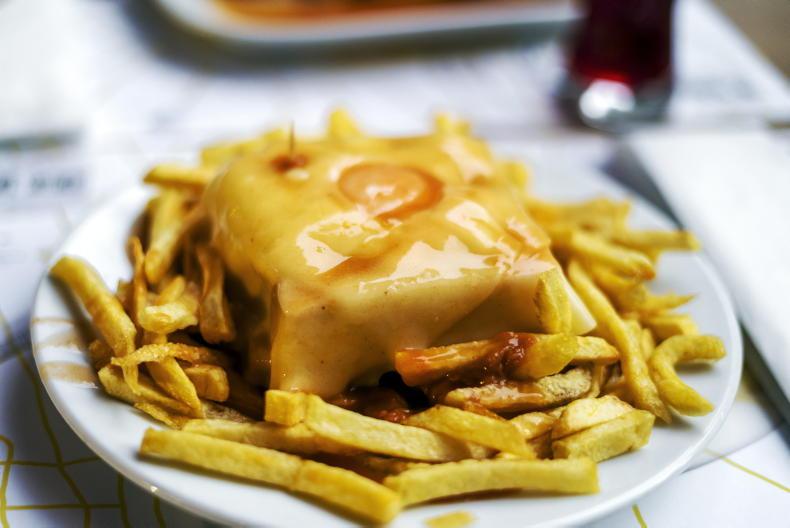
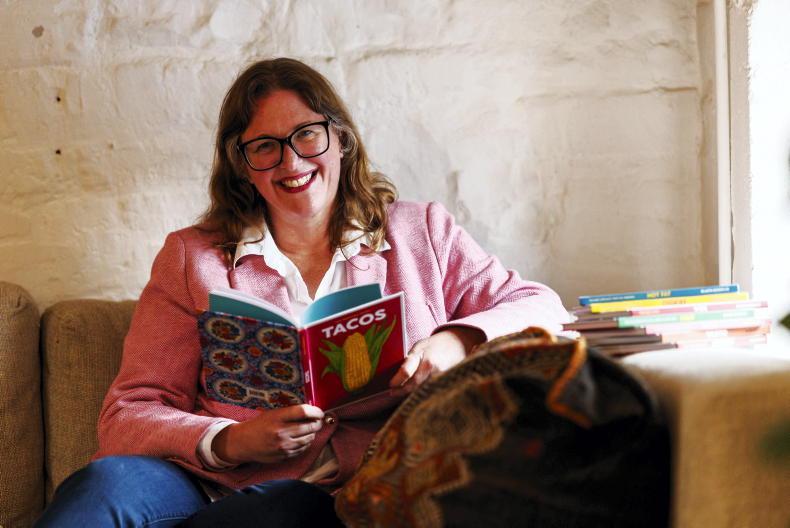


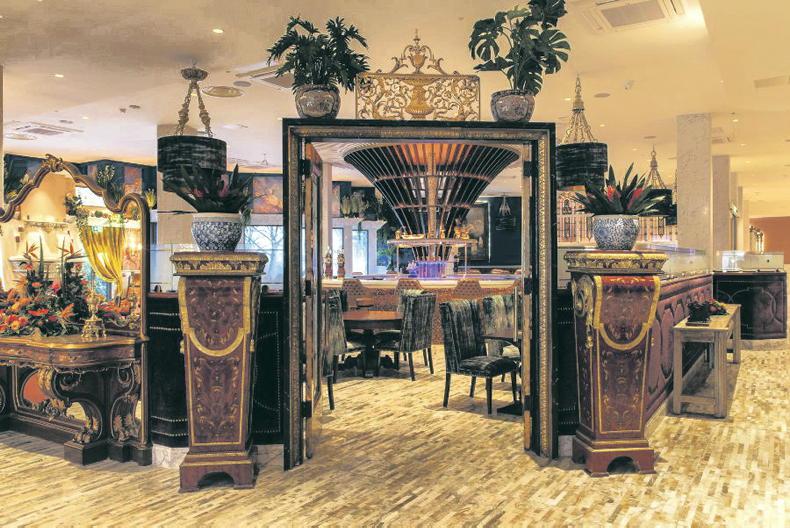
SHARING OPTIONS